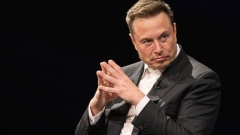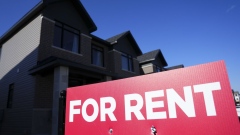Sep 20, 2019
Politics turn nasty in Canada as Trudeau and rivals get personal
, Bloomberg News
The Strategists: Bombshell pictures rock Trudeau's campaign
For polite Canada, the latest federal election campaign is turning out to be pretty nasty.
Even before bombshell pictures of Prime Minister Justin Trudeau in blackface makeup surfaced on Wednesday, his Liberals and their main opposition Conservatives had foregone the usual niceties in favour of tactics more common to the hyper-partisan mud slinging contests south of the border in the U.S.
To some, it’s been a cynical race to the bottom where leaders have focused on inflicting maximum damage on their rivals rather than propping themselves up -- a slippery slope that could fuel the sort of political polarization that Canada has largely avoided until now.
“We’re going down a bad road here and after this campaign we’re probably going to see a lot of postmortems about how did we get here,” said Rick Anderson, a long-time political strategist in Ottawa.
From the start, the Liberal plan has been to paint the Conservatives as reflexively regressive, riddled with closeted bigots and ready to pounce on women’s reproductive rights. Conservative Leader Andrew Scheer, meanwhile, has gone personal, raising questions about the prime minister’s integrity and calling him a liar who would say anything to get elected.
Both parties are using increasingly sophisticated campaign war rooms -- armed with volumes of research on rival candidates and ready to attack every perceived disadvantage -- to fuel the negativity.
Days before the election was called, Ralph Goodale, Trudeau’s public safety minister, released a 2005 video of Scheer, a practicing Roman Catholic, talking about how he opposed same sex marriage because gay couples can’t naturally procreate.
In another incident, Trudeau’s minister for women and gender equality, Maryam Monsef, released a video from 2013 featuring a Conservative candidate, a female entrepreneur, pitching an idea for a TV show with another woman who has since become one of Canada’s most well-known hard-right personalities. The video was released just in time for a Scheer campaign stop with his candidate.
This is a far cry from Trudeau’s “sunny ways” approach in the 2015 election, when he garnered international attention with an upbeat and positive campaign that brought him to power.
Dangerous Development
“It’s been a very negative campaign so far,” Christopher Sands, Washington-based director of the Center for Canadian Studies at Johns Hopkins University, said by phone. “The problem when you go negative early is that you’ve got nowhere else to go except more negative.”
A consequence of the vitriol has been the diminished esteem Canadians now hold for most major party leaders. According to poll tracking by the Canadian Broadcasting Corp., only a third of Canadians approve of Trudeau’s performance, while more than 50 per cent disapprove. Scheer’s ratings aren’t much better.
It’s a dangerous development that opens the door to populists, according to Anderson, currently a principal at Earnscliffe Strategy Group. “How long are we going to be like that before we find our situation like the U.K. and the States -- it may not take very long,” he said. “I don’t know what happens when people don’t like anybody.”
Now Trudeau’s Liberals are finding themselves hoist with their own petard. Scheer has already acknowledged his party leaked one of the Trudeau blackface videos to a news organization, though he denies being aware of the explosive picture of Trudeau dressed as Aladdin that was the first to surface.
Scheer’s efforts to blot Trudeau’s character is also feeding the divisiveness, analysts say.
“In this particular campaign, it’s not only negative but it’s personal, that’s the twist on this,” said Nik Nanos, chairman of Nanos Research Group. “It’s not just we don’t agree with your ideas, but you are not fundamentally a good person.”












